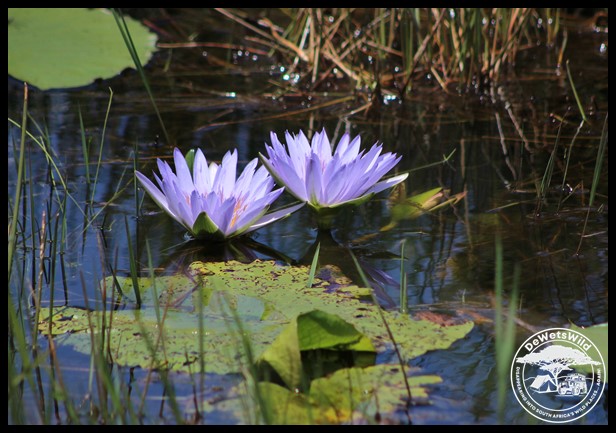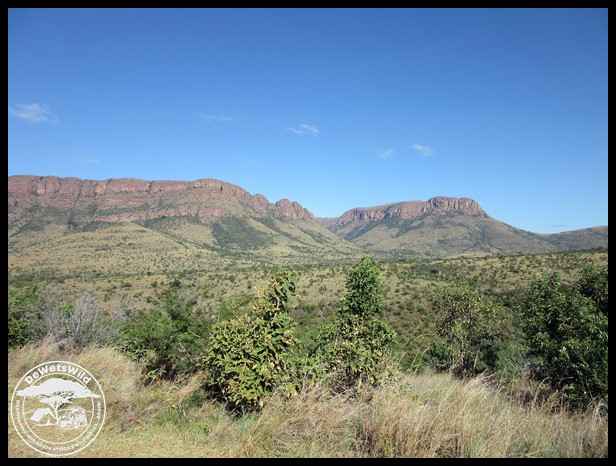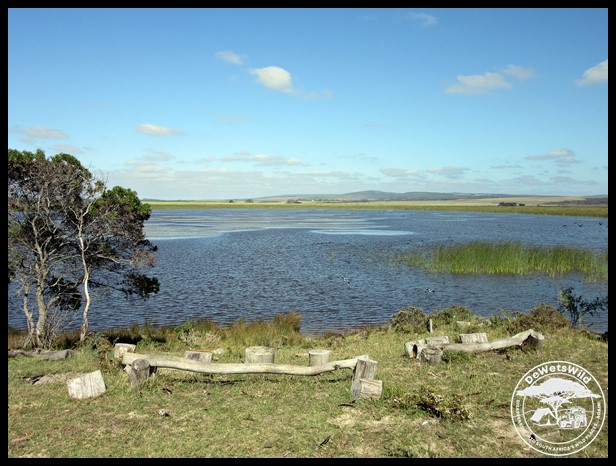Isn’t it amazing how quickly the things we enjoy doing fly past!? I can’t believe another month of guiding drives at our local Rietvlei Nature Reserve is behind me already. Time then to take a look at what Rietvlei dished up in the month of April. Autumn is most definitely here and it is noticeable not only in the changing colours of the grass and leaves but also in the absence of most of the birds that visit our part of the world during summer.
I ticked 93 species of birds while guiding guests through the reserve this April.
One of the highlights of the month was watching this pair of Pied Starlings sharing tiny red berries.
Fifteen species of mammal showed themselves during our drives in April.
List of mammals seen at Rietvlei Nature Reserve in April 2024:
| Scientific | Afrikaans | English |
| Alcelaphus buselaphus | Rooihartbees | Red Hartebeest |
| Antidorcas marsupialis | Springbok | Springbuck |
| Canis mesomelas | Rooijakkals | Black-backed Jackal |
| Ceratotherium simum | Witrenoster | White Rhinoceros |
| Connochaetes gnou | Swartwildebees | Black Wildebeest |
| Cynictis penicillata | Witkwasmuishond | Yellow Mongoose |
| Damaliscus pygargus | Blesbok | Blesbuck |
| Equus quagga | Bontsebra | Plains Zebra |
| Herpestes sanguineus | Swartkwasmuishond | Slender Mongoose |
| Hippopotamus amphibius | Seekoei | Hippopotamus |
| Hydrictis maculicollis | Kleinotter | Spotted-necked Otter |
| Kobus ellipsyprymnus | Waterbok | Waterbuck |
| Syncerus caffer | Buffel | Cape Buffalo |
| Taurotragus oryx | Eland | Eland |
| Microchiroptera | Insekvretende vlermuis (spesie onbekend) |
Insect-eating bat (species unknown) |
List of birds seen at Rietvlei Nature Reserve in April 2024:
| Scientific | Afrikaans | English |
| Acridotheres tristis | Indiese Spreeu | Common Myna |
| Acrocephalus gracilirostris | Kaapse Rietsanger | Lesser Swamp Warbler |
| Afrotis afraoides | Witvlerkkorhaan | Northern Black Korhaan |
| Alopochen aegyptiaca | Kolgans | Egyptian Goose |
| Amandava subflava | Rooiassie | Orange-breasted Waxbill |
| Amblyospiza albifrons | Dikbekwewer | Thick-billed Weaver |
| Anas erythrorhyncha | Rooibekeend | Red-billed Teal |
| Anas sparsa | Swarteend | African Black Duck |
| Anas undulata | Geelbekeend | Yellow-billed Duck |
| Anthus cinnamomeus | Gewone Koester | African Pipit |
| Apus caffer | Witkruiswindswael | White-rumped Swift |
| Ardea melanocephala | Swartkopreier | Black-headed Heron |
| Batis molitor | Witliesbosbontrokkie | Chinspot Batis |
| Bostrychia hagedash | Hadeda | Hadeda Ibis |
| Bubulcus ibis | Veereier | Western Cattle Egret |
| Burhinus capensis | Gewone Dikkop | Spotted Thick-knee |
| Butorides striata | Groenrugreier | Green-backed Heron |
| Cecropis cucullata | Grootstreepswael | Greater Striped Swallow |
| Centropus burchellii | Gewone Vleiloerie | Burchell’s Coucal |
| Ceryle rudis | Bontvisvanger | Pied Kingfisher |
| Chalcomitra amethystina | Swartsuikerbekkie | Amethyst Sunbird |
| Chrysococcyx caprius | Diederikkie | Diederik Cuckoo |
| Cinnyris talatala | Witpenssuikerbekkie | White-belled Sunbird |
| Circaetus pectoralis | Swartborsslangarend | Black-chested Snake Eagle |
| Cisticola tinniens | Vleitinktinkie | Levaillant’s Cisticola |
| Colius striatus | Gevlekte Muisvoel | Speckled Mousebird |
| Columba arquatrix | Geelbekbosduif | African Olive Pigeon |
| Corvus albus | Witborskraai | Pied Cow |
| Corythornis cristatus | Kuifkopvisvanger | Malachite Kingfisher |
| Crinifer concolor | Kwevoel | Grey Go-Away Bird |
| Crithagra gularis | Streepkopkanarie | Streaky-headed Seedeater |
| Curruca subcoerulea | Bosveldtjeriktik | Chestnut-vented Warbler |
| Dessonornis caffer | Gewone Janfrederik | Cape Robin-Chat |
| Dicrurus adsimilis | Mikstertbyvanger | Fork-tailed Drongo |
| Elanus caeruleus | Blouvalk | Black-winged Kite |
| Estrilda astrild | Rooibeksysie | Common Waxbill |
| Euplectes albonotatus | Witvlerkflap | White-winged Widowbird |
| Euplectes ardens | Rooikeelflap | Red-collared Widowbird |
| Euplectes orix | Rooivink | Southern Red Bishop |
| Euplectes progne | Langstertflap | Longtailed Widowbird |
| Falco biarmicus | Edelvalk | Lanner Falcon |
| Falco peregrinus | Swerfvalk | Peregrine Falcon |
| Falco rupicolus | Kransvalk | Rock Kestrel |
| Fulica cristata | Bleshoender | Red-knobbed Coot |
| Gallinago nigripennis | Afrikaanse Snip | African Snipe |
| Gallinula chloropus | Grootwaterhoender | Common Moorhen |
| Hirundo albigularis | Witkeelswael | White-throated Swallow |
| Hirundo rustica | Huisswael | Barn Swallow |
| Icthyophaga vocifer | Visarend | Fish Eagle |
| Ixobrychus minutus | Klein Rietreier | Little Bittern |
| Jynx ruficollis | Draaihals | Red-throated Wryneck |
| Lamprotornis bicolor | Witgatspreeu | Pied Starling |
| Lamprotornis nitens | Klein Glansspreeu | Cape Glossy Starling |
| Laniarius ferrugineus | Suidelike Waterfiskaal | Southern Boubou |
| Lanius collaris | Fiskaallaksman | Common Fiscal |
| Lybius torquatus | Rooikophoutkapper | Black-collared Barbet |
| Macronyx capensis | Oranjekeel Kalkoentjie | Cape Longclaw |
| Megaceryle maxima | Reuse Visvanger | Giant Kingfisher |
| Microcarbo africanus | Rietduiker | Reed Cormorant |
| Mirafra africana | Rooineklewerik | Rufous-naped Lark |
| Motacilla capensis | Gewone Kwikkie | Cape Wagtail |
| Netta erythrophthalma | Bruineend | Southern Pochard |
| Numida meleagris | Gewone Tarentaal | Helmeted Guineafowl |
| Passer diffusus | Gryskopmossie | Southern Grey-headed Sparrow |
| Passer melanurus | Gewone Mossie | Cape Sparrow |
| Phalacrocorax lucidus | Witborsduiker | White-breasted Cormorant |
| Phoeniculus purpureus | Rooibekkakelaar | Green Wood-hoopoe |
| Ploceus velatus | Swartkeelgeelvink | Southern Masked Weaver |
| Podiceps nigricollis | Swrtnekdobbertjie | Black-necked Grebe |
| Porphyrio madagascariensis | Grootkoningriethaan | African Swamphen |
| Prinia subflava | Bruinsylangstertjie | Tawny-flanked Prinia |
| Psittacula krameri | Ringnekparakiet | Rose-ringed Parakeet |
| Pternistis swainsonii | Bosveldfisant | Swainson’s Spurfowl |
| Pycnonotus tricolor | Swartoogtiptol | Dark-capped Bulbul |
| Quelea quelea | Rooibekkwelea | Red-billed Quelea |
| Saxicola torquatus | Gewone Bontrokkie | African Stonechat |
| Scopus umbretta | Hamerkop | Hamerkop |
| Sigelus silens | Fiskaalvlieevanger | Fiscal Flycatcher |
| Spilopelia senegalensis | Rooiborsduifie | Laughing Dove |
| Streptopelia capicola | Gewone Tortelduif | Cape Turtle Dove |
| Streptopelia semitorquata | Grootringduif | Red-eyed Dove |
| Struthio camelus | Volstruis | Common Ostrich |
| Tachybaptus ruficollis | Kleindobbertjie | Little Grebe |
| Tadorna cana | Kopereend | South African Shelduck |
| Telophorus zeylonus | Bokmakierie | Bokmakierie |
| Threskiornis aethiopicus | Skoorsteenveer | African Sacred Ibis |
| Turdoides jardineii | Pylvlekkatlagter | Arrow-marked Babbler |
| Turdus smithi | Geelbeklyster | Karoo Thrush |
| Urocolius indicus | Rooiwangmuisvoel | Red-faced Mousebird |
| Vanellus armatus | Bontkiewiet | Blacksmith Lapwing |
| Vanellus coronatus | Kroonkiewiet | Crowned Lapwing |
| Vanellus senegallus | Lelkiewiet | Wattled Lapwing |
| Zosterops virens | Kaapse Glasogie | Cape White-eye |
If you’d like to join me on a guided tour of Rietvlei – on a hike or on an open vehicle drive – you can book through melanie@rietvleicoffee.co.za / +27(0)74-820-9926.



























































































































































































































































































































































































































































































































